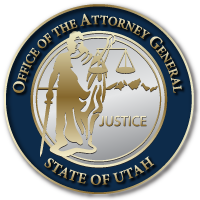Click here to sign up for the Victim Information Notification Everyday (VINE) program
THE CONSTITUTIONAL DECLARATION OF VICTIMS’ RIGHTS
The Victims’ Rights Amendment has made five changes in the Utah Constitution:
- Guarantees victims of crime the right to be treated with fairness, respect, and dignity, and to be free from harassment and abuse throughout the criminal justice process.
- Guarantees victims of crime the right upon request to be informed of, to be present at, and to be heard at important criminal justice proceedings.
- Provides crime victims with a constitutional right to prompt and final conclusion of the case.
- Ensures the court has all relevant information when sentencing a defendant.
- Eliminates the constitutional requirement that crime victims testify at preliminary hearings, especially when there is no good reason for doing so and when testifying may be extremely traumatic.
THE COURT PROCESS
As a victim or witness to a crime, your assistance is vital to our system of criminal justice. The following information will explain what happens when a case goes through the criminal justice system.
The prosecution of a crime involves several steps, the most typical of which are:
- First Appearance
- Preliminary Hearing
- Arraignment
- Motion Hearing
- Trial
- Sentencing
You may be asked to testify at a preliminary hearing, motion hearing, or at the trial.
First Appearance
The first step in the court process is the first appearance. At this hearing, a defendant is appointed an attorney if the defendant cannot afford one. A preliminary hearing date is set.
Preliminary Hearing
In felony cases, the prosecution must present evidence to show probable cause that a crime has been committed and that the defendant committed the crime. If the judge finds there is probable cause, the defendant is “bound over” to District Court for arraignment and trial. If probable cause is not found, the case will be dismissed.
Arraignment
The defendant appears before a judge and the defendant is advised of his/her right to have a trial by a judge or a jury. A plea to the charges is entered. Incarceration of the defendant is also considered. Witnesses are not normally required at the arraignment.
Motion Hearing
A motion is a procedure whereby the prosecutor or defense attorney asks the judge to rule on some aspect of the case. At a motion hearing, the defense and prosecution can present arguments for or against the motion, and the judge will rule for one side or the other.
Trial
The trial is the point at which the defendant’s guilt or innocence will be determined by either a judge or a jury. Trials can last part of a day or several days, depending on the amount of the evidence and the number of witnesses required to present the case.
Sentencing
At sentencing, the judge tells a defendant that has been convicted, or who has pled guilty, what his/her punishment will be. The punishment may be prison, probation, treatment, and/or restitution. Some other options that might arise can be explained by the Victim/Witness Coordinator in our office. The court has the discretion to order the defendant to pay the victims for their losses. This restitution may be ordered for property damage, loss of property, medical or psychological expenses, and/or burial expenses. The Adult Probation and Parole Department supervises payments of restitution. The State of Utah also has a program to assist in some types of restitution.
Photo by James L.W

